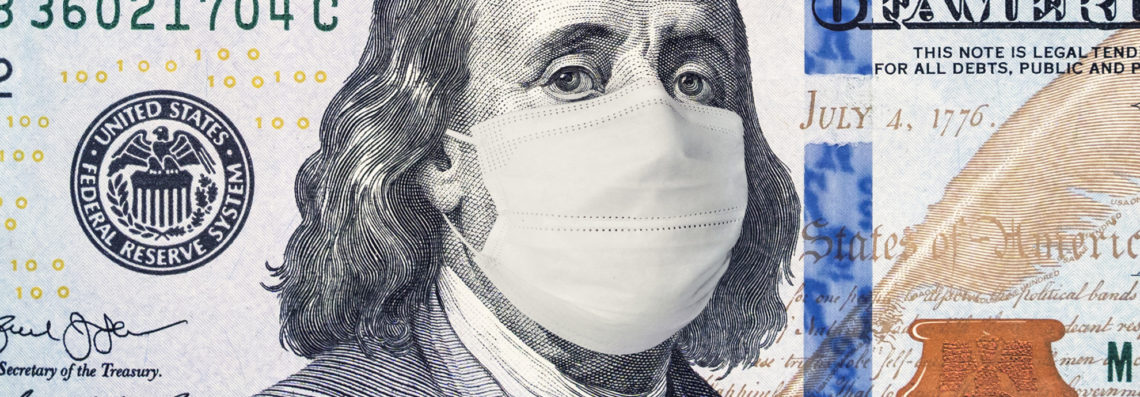Will cash be a thing of the past in the post-COVID-19 world?
In just a few months, COVID-19 has managed to fundamentally disrupt the philosophies, processes, and systems of societies across the globe. One thing is for sure; our future will look very different. Business travel will never be the same, and companies are opting for work-from-home approaches. In the case of one retail giant, this means selling its newly finished futuristic headquarters before it even had a chance to move in.
The financial services industry is no different. The shift to digital financial services has forever altered the banking experience. Even before the global pandemic, the way we use money has been changing from traditional cash-based transactions to utilizing various forms of digital payments. The COVID-19 crisis has expedited the demand for contactless, globally-connected, digital financial services.
Let’s take a look at three main trends that COVID-19 has prompted.
One
During times of economic freefall, it has been shown that fear induces individuals, and sometimes governments, to liquidate their assets and hoard cash. In March, banks reported running low, or out, of paper bills because customers were withdrawing large amounts in angst-ridden anticipation of a doomsday scenario.
Two
Yes, we’re in a global economic freefall, but one caused by a virus. Viruses are easy to contract and typically live and spread on surfaces that receive a lot of human touch like doorknobs, water fountains, and cash… wait, did I say cash? Yes, cash, and for that matter credit/debit cards as well.
In a recent study conducted in New York City, Lendedu.com found that the dirtiest forms of payment were credit and debit cards. On average, cards had more bacteria and germs than the Penn Station bathroom! Additionally, cash and coins scored worse than an NYC subway pole. Think about that next time you reach into your wallet. As a result, many consumers fear using cash but should feel the same way about their plastic.
Three
For the average consumer, bank branches and ATMs are the most common places to “pull out cash.” Before the pandemic’s peak, Bank of America reported that nearly 800,000 people came in and out of their branches each day! COVID-19 and the resulting shift to digital financial services have forced banks to rethink their branch strategy for the future. Meanwhile, the world waits for a vaccine, and large gatherings will likely remain prohibited or discouraged. If branches remain closed or operate at limited capacity, where will consumers get their dirty cash?
Trending data
Globally, the use of digital payments has increased dramatically due to the Coronavirus outbreak and these resulting factors. Online retailers have seen a 52% increase in sales compared to a year ago, and in some cases, as stores begin to reopen, they are strictly prohibiting payment in cash or credit cards. Moreover, in a recent research report, global shoppers are using digital payments 50% more than before the COVID-19 outbreak and expressed the intention to continue doing so. In Singapore, research found that card payments are “forecasted to grow by 2.5% in 2020, reaching $85.3 billion, while cash withdrawals at ATMs are forecasted to decline by 3.4% during the same period.”
Where does this leave us?
COVID-19 has highlighted that offering digital financial services is likely a critical factor for the survival of community financial institutions as cash disappears. However, for the financial industry as a whole, the solution to cash will not be as simple as “turning on” digital services.
For banks and credit unions, offering digital financial services will require integrating with core banking technology to support the demand for digital payments.
Similarly, the microfinance industry is in trouble. Microfinance currently relies on in-person, cash transactions, and the rapid shift to digital has put it on its head. For this industry to pull through and continue to support nearly half of the world’s businesses, it must heed these four digital essentials to survive the economic downturn.
Further, governments, telcos, and mobile money operators must convert to real-time, interoperable payment networks to create low-cost usage that drives inclusive finance for the world’s 1.7 billion unbanked people.
ModusBox is uniquely positioned to deliver solutions to address these challenges that have been amplified by the global pandemic. If you would like to learn more about how our software is driving low-cost digital payment services for banks, companies, governments, and people everywhere, visit our website. There, you can learn about Mojaloop – the world’s first open source platform for interoperability in a real-time payment network. For financial institutions, PortX Payment Manager is our no-code suite of APIs that connects a banking core to many different digital networks (including Mojaloop), platforms, and protocols to support real-time payments.
Or, contact a member of our team today to start a conversation.






